McAfee ID Theft Protection Review 2024
This ID theft monitoring service tries to do everything, but is it any good? We took it for a test drive to find out.

SafeHome.org may receive compensation from some providers listed on this page. Learn More
We may receive compensation from some providers listed on this page. Learn More
This ID theft monitoring service tries to do everything, but is it any good? We took it for a test drive to find out.

Check out more recommendations from the SafeHome team:
There are so many ways you can fall victim to online swindlers these days that just flipping open your laptop can feel like a game of high-stakes roulette. Bad files, bad networks, bad emails, bad SMS. The list goes on.
With so many avenues of attack, how can you possibly keep all your personal data safe? McAfee, the antivirus giant, has just stepped into the ring with a solution: a massive fraud-defense package combining malware and web protection, a password vault, a free VPN, and ID and credit monitoring.
It’s highly unusual to see so much protection crammed into a single plan. Even stranger is McAfee’s $49.99 starting price tag. (That’s for a year, by the way, not a month.)
Too good to be true? It took a little digging through McAfee’s various plans and offers — and a few weeks testing their apps and ID theft protection service — but I believe I can now answer that question.
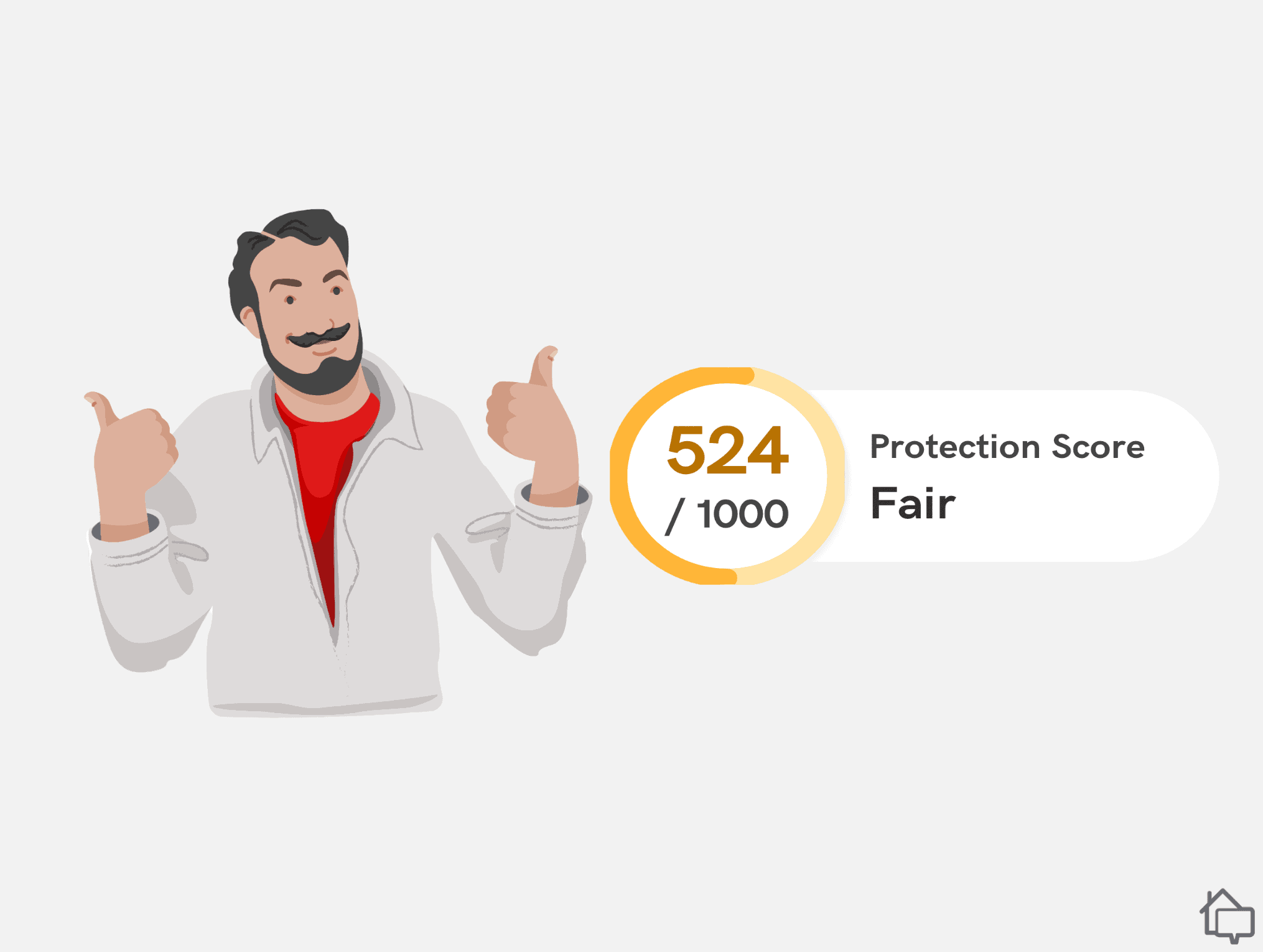
McAfee gave me a Protection Score (complete with bearded Fonz). I managed to nudge it up, but only after I installed my antivirus software.
Did You Know? McAfee isn’t the only name in antivirus software to cross over into the ID protection market. NortonLifeLock is another safe bet for ID monitoring stacked with a solid suite of cybersecurity features.
McAfee’s marketing team recently decided that a “less is more” approach is the way to go for the company’s website. (I’m not conjecturing here; I actually confirmed this in a conversation with a McAfee rep.)
The upshot is very little concrete detail about the ID monitoring features bundled into the company’s identity protection plans, Premium ($49.99 for the first year) and Advanced ($89.99). I had to dig just to find out whether McAfee plans include credit monitoring, for instance. They do, but only single-bureau monitoring with Experian. Even the rep didn’t know off the top of his head.
These are little hiccups. I get that. But considering the top names in ID theft monitoring all go into great detail about the services they offer, this is an issue McAfee should address pronto.
To cut the suspense, I went with the slightly cheaper Premium Family plan for $59.99 for the first year. The big bonus is that for an extra $10, I got parental controls for the kiddos. (Not that I don’t trust them online. I just don’t trust them.) Here’s a quick breakdown of both McAfee plans.
| Features and Pricing | Premium | Advanced |
|---|---|---|
| Antivirus software | Yes | Yes |
| Online dashboard | Yes | Yes |
| WebAdvisor browser extension | Yes | Yes |
| VPN* | Yes | Yes |
| Password manager | Yes | Yes |
| ID monitoring | Yes | Yes |
| Personal data cleanup | Scans only | Yes |
| Single-bureau credit monitoring | Yes | Yes |
| $1 million restoration services | No | Yes |
| Special price for individuals | $4.17 per month | $7.50 per month |
| Regular price for individuals | $10.83 per month | $15 per month |
| Special price for families | $5 per month | $8.33 per month |
| Regular price for families | $12.50 per month | $16.67 per month |
*To access McAfee’s VPN and password manager, you need to set your subscription to auto-renew. You can run the VPN on up to five devices.
Whether I’d opted for the Family plan or not, my McAfee Premium plan covered up to 50 devices — another nice perk. I can’t tell you off the top of my head how many devices we have in the house, but it isn’t anywhere in the neighborhood of 50, so kudos to McAfee for getting this right.
That isn’t everything my McAfee subscription gave me, but before we dive too deeply into McAfee’s premium protections, let’s take a look at the setup process. With McAfee there are a few hurdles to be aware of, especially if you have a Mac.
FYI: McAfee’s Total Protection plan (a separate option) is identical to its ID monitoring packages, except with Total Protection you can purchase a single-device subscription for a rock bottom $29.99 per year. You probably wouldn’t want to do that, but it’s technically an option.
My McAfee subscription started with a serious bang. I got two breach alerts in my inbox the second after I clicked purchase.
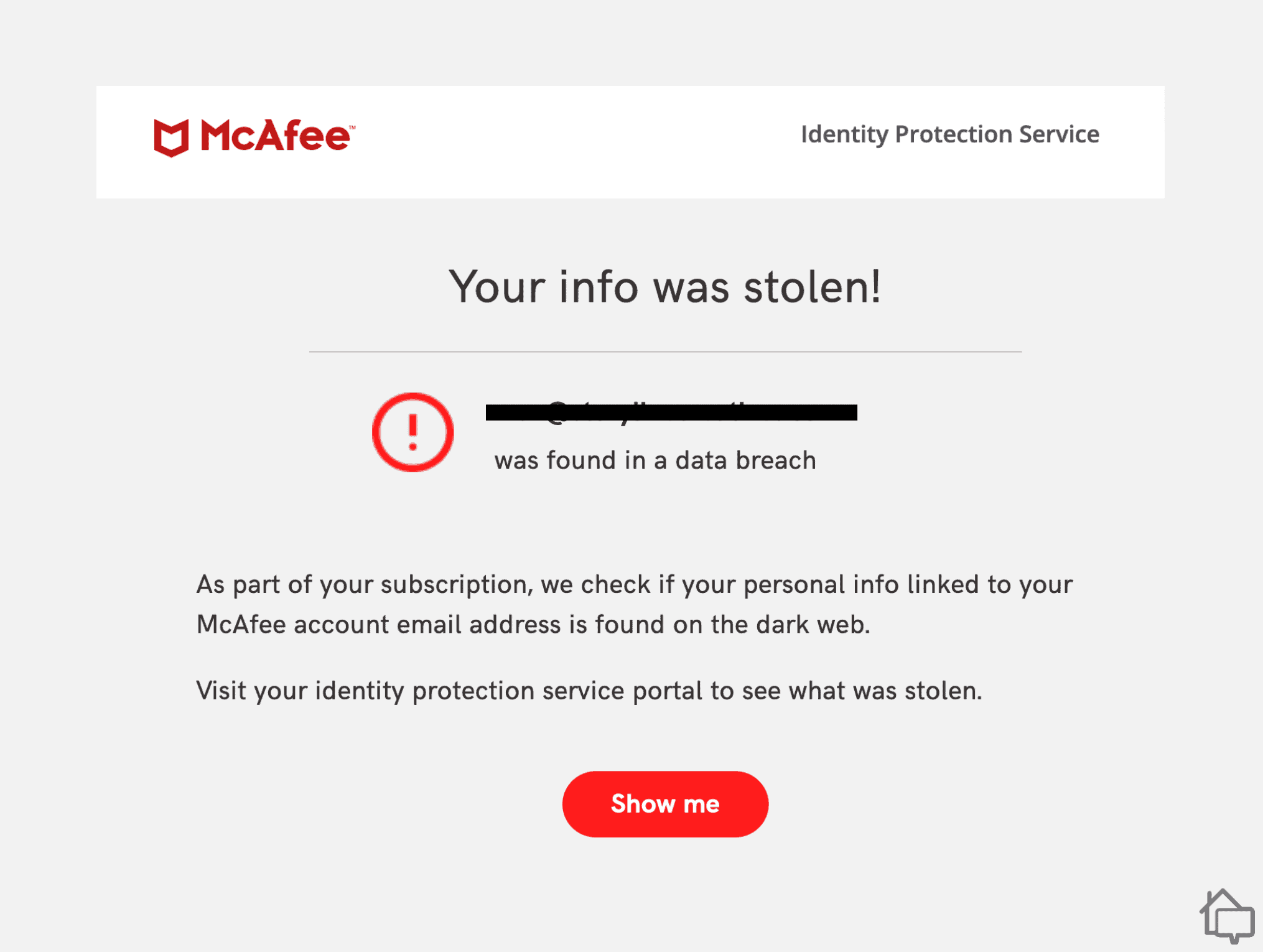
McAfee snagged two email address breaches right out the gate.
To check out the breaches, first I had to verify my email address via two-factor authentication. (McAfee sent a code to my phone as a one-time password, or OTP.) I’m glad I had to do this, because it means the folks at McAfee are taking extra precautions with my data.
Apparently, the two breaches happened in 2019 and 2020. One was a Google Cloud leak that compromised billions of user data “appropropriated” by the data pirates at People Data Labs. How had they gotten my email? I have no idea. It just goes to show what can happen when you’re not looking and why you need to stay vigilant.
Those breaches — and any more that happen down the line — will conveniently appear on my McAfee dashboard, which is more or less an app that lives in my browser. Here’s what it looks like:
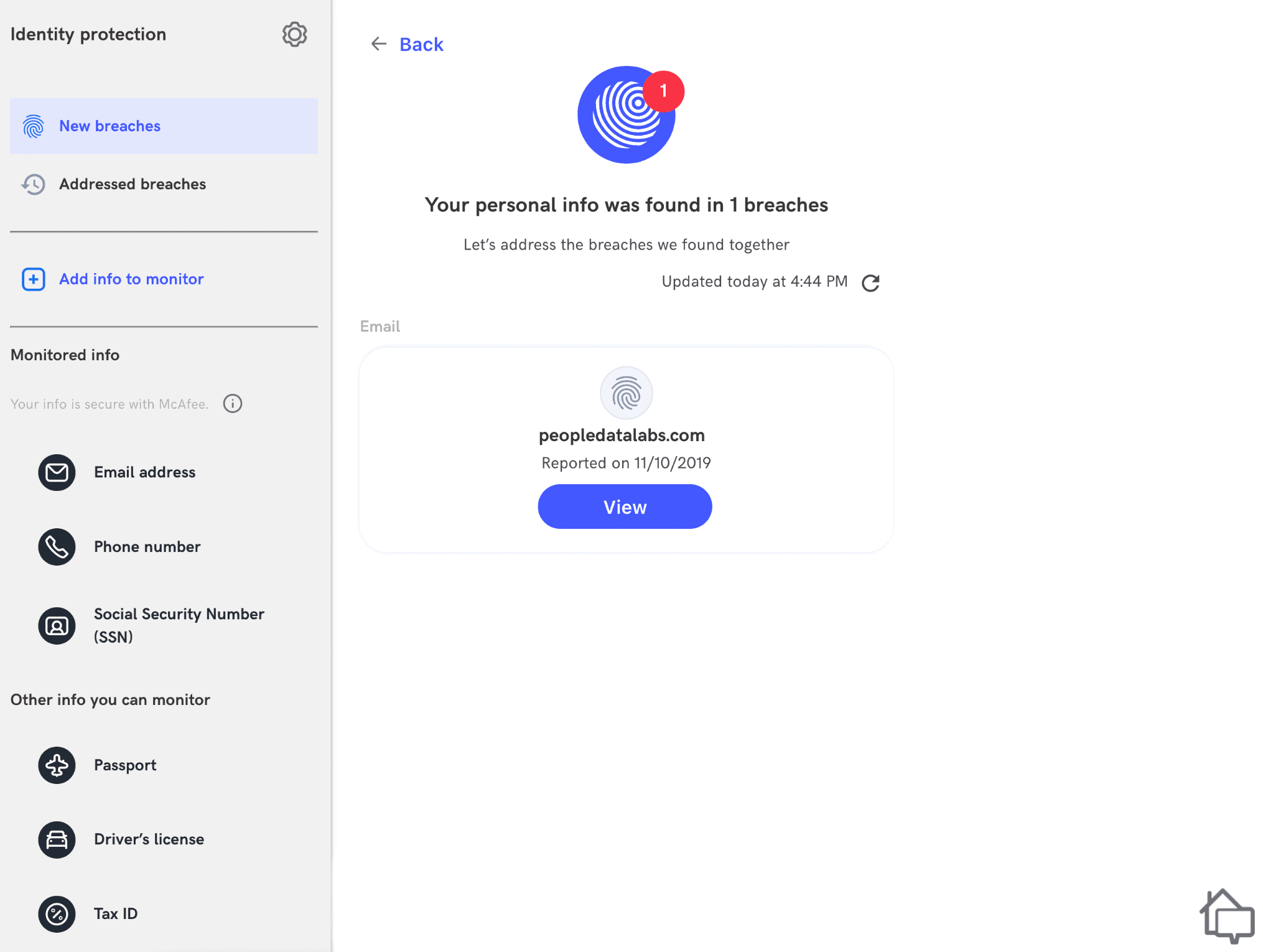
My McAfee dashboard is my online identity protection hub where I can monitor my email addresses and all my other personal info under lock and key.
Cleaning up my stolen data, however, wasn’t as straightforward as the breaches themselves. McAfee gave me a list of data brokers who had gotten their mitts on my personal info, but I had to upgrade if I wanted McAfee to contact those companies and wipe my data. Otherwise, cleanup was on me. I’d actually like to unpack this a bit, especially if this is your first foray into data brokering.
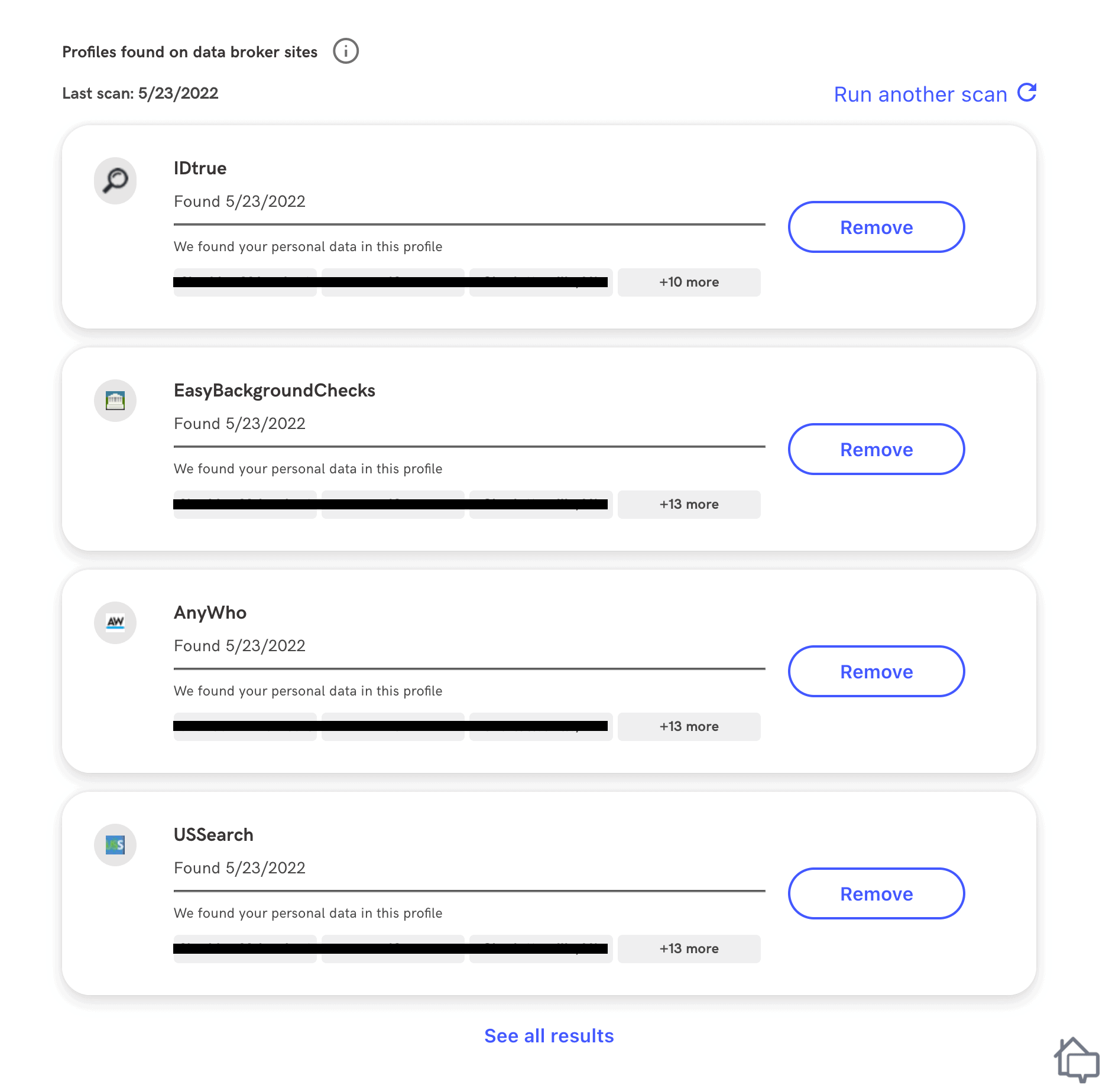
Four of the 36 data brokers who were selling my data.
When you visit websites, you leave a trail of data behind. It could be anything from your IP address to your name, phone number, or email. We like to think our data is securely locked and stored on the websites we choose to give it to, but that’s rarely the case. Our personal details often end up in the hands of sketchy companies that mine and sell them for big money.
Case in point: me. My own address had popped up on 36 “people search” websites along with a bunch of other details I never gave them. (And, remember, these are only the sites McAfee monitors.)
A very quick trip to the first, ID True, told me the only way to begin the process of scrubbing my data from its site was a phone call. Multiply that by 36 and you understand how much time it would take.
McAfee offers an alternative. For another $40 a year, you can sign up for McAfee Advanced and McAfee will do the grunt work for you, clearing any pilfered data and scanning every three months for new info that makes it online without your knowledge.
Bottom line? McAfee’s cleanup service by itself wasn’t all that useful. It just confirmed what I already knew. A bunch of sleazy websites posing as private investigators had gotten their hands on my private details over the years. But at least moving forward I’d get notifications (on my dashboard and by SMS) if it ever happened again.
Now that I’d gotten my privacy sorted out, it was time to set up ID monitoring.
Identity Protection Tip: McAfee gives subscribers who opt for auto-renewal a few substantial benefits, including a VPN on up to five devices. Needless to say, that is a huge incentive to leave auto-renewal on until you’re actually ready to cancel.
I was pleased to see that McAfee’s ID monitoring dashboard was set up to keep an eye on just about any piece of personal identifying information I gave it, including my health ID and my tax ID.
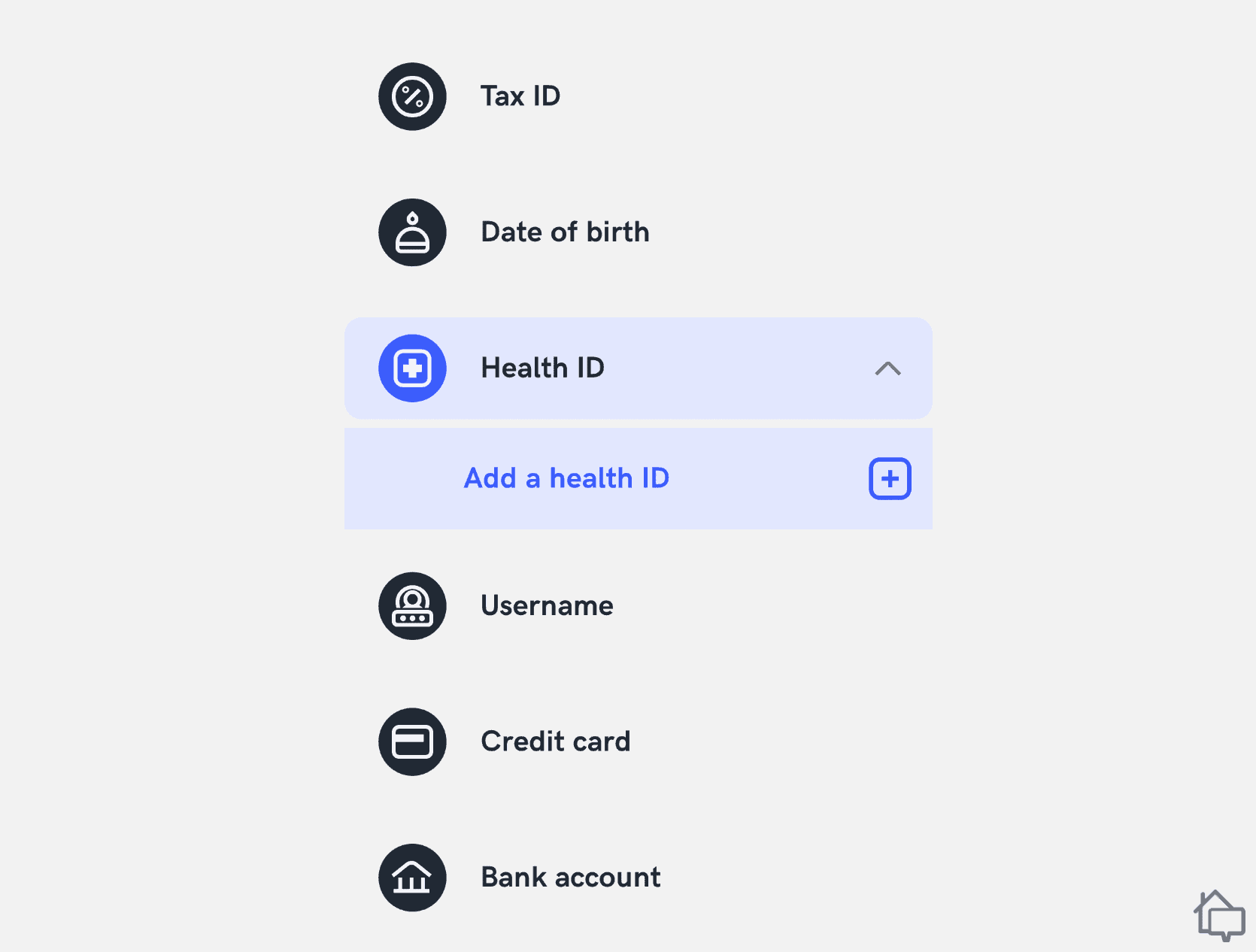
Health scams are no joke. McAfee has your back with Health ID monitoring.
If you’re thinking, “What could someone possibly do with my health ID? Get a prescription filled?” The unfortunate truth is that grifters have been making a mint on bogus tax and health claims applications since the pandemic hit. It’s truly appalling, but a fact of life.
The way the scoundrels get their paws on your info is the same way McAfee keeps it safe — by crawling the dark web from morning to night. The difference is, McAfee pings you the second your data goes up for sale.
Personal information isn’t the only valuable commodity we have to keep our eyes on. Once criminals have amassed enough of our sensitive data, they can use it to forge new identities, which they’ve been doing in droves lately.1 They can apply for driver’s licenses, loans, and mortgages, for example. And they can even commit financial crimes in our names, damaging our credit scores.
That’s why we always recommend an ID monitoring service that watches your credit report at all three credit bureaus — Experian, TransUnion, and Equifax. That way, there’s virtually no chance an ID theft disaster in the making can slip through the cracks.
Unfortunately, McAfee’s credit monitoring protection falls short here, keeping tabs on Experian only.
For those of you just looking for red flags after a breach or potential theft, you’re ok. If you had your sights set on a service with more emphasis on ID protection and restoration, however, IdentityIQ ID monitoring plans may be a good place to start. Not only do the folks at IdentityIQ watch all your credit reports, but they also cooperate with the cybersecurity specialists at Bitdefender to deliver best-in-class malware protection (and a free VPN).
Did You Know? IdentityIQ isn’t alone in delivering first-rate cybersecurity with triple-bureau credit report monitoring. IdentityForce’s identity protection service has tested consistently well with affordable triple-bureau monitoring and no-nonsense browser protections.
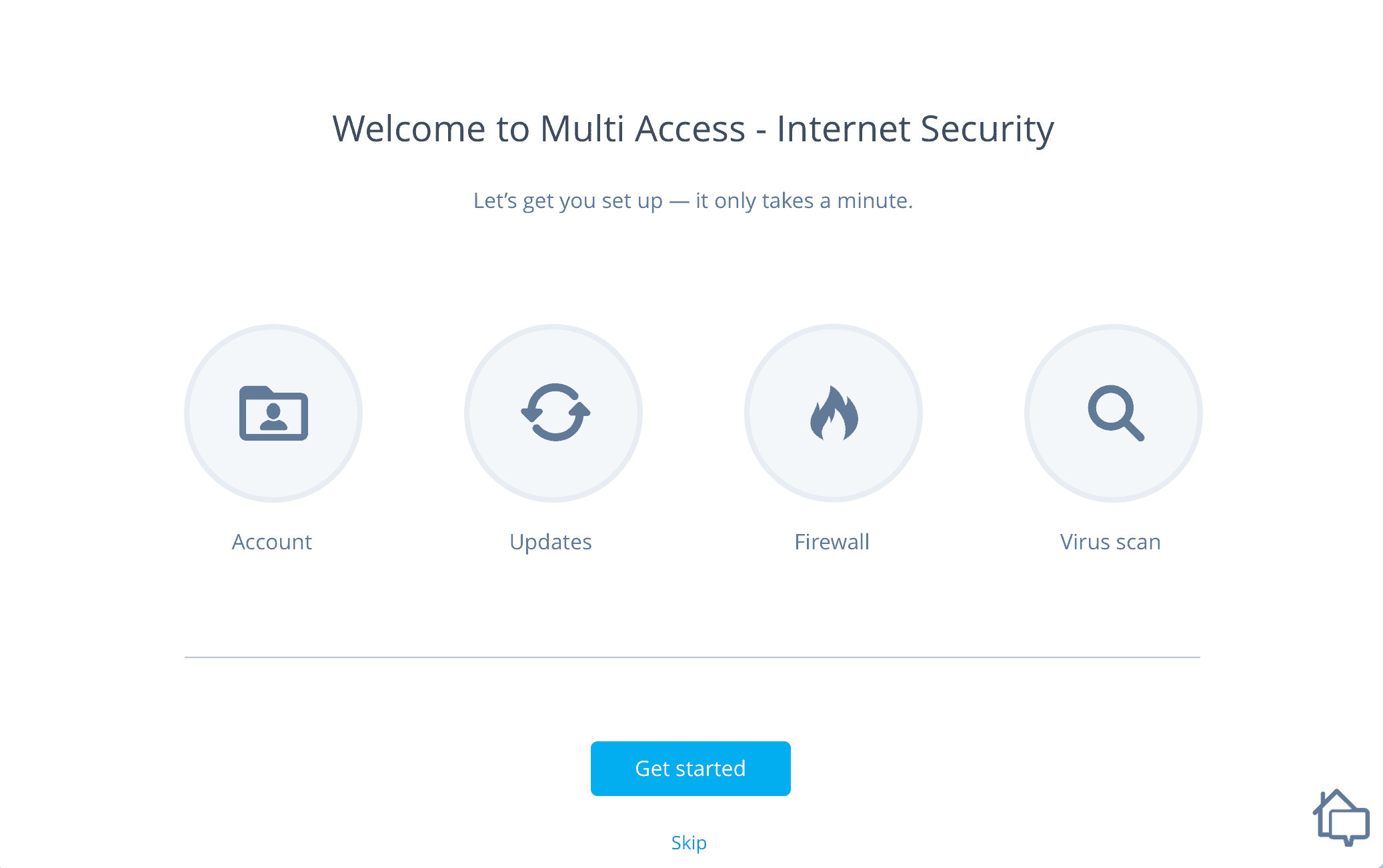
McAfee’s Mac software looks good on my screen, but it didn’t always hold up in tests.
Getting the rest of my McAfee protections up and running was an unexpectedly cumbersome process. First, I had to move from the lightweight, browser-based app to a clunkier piece of downloadable software called Multi Access – Internet Security (MAIS).
I won’t beat around the bush: MAIS was a little touchy. It crashed a few times before I could even get inside.
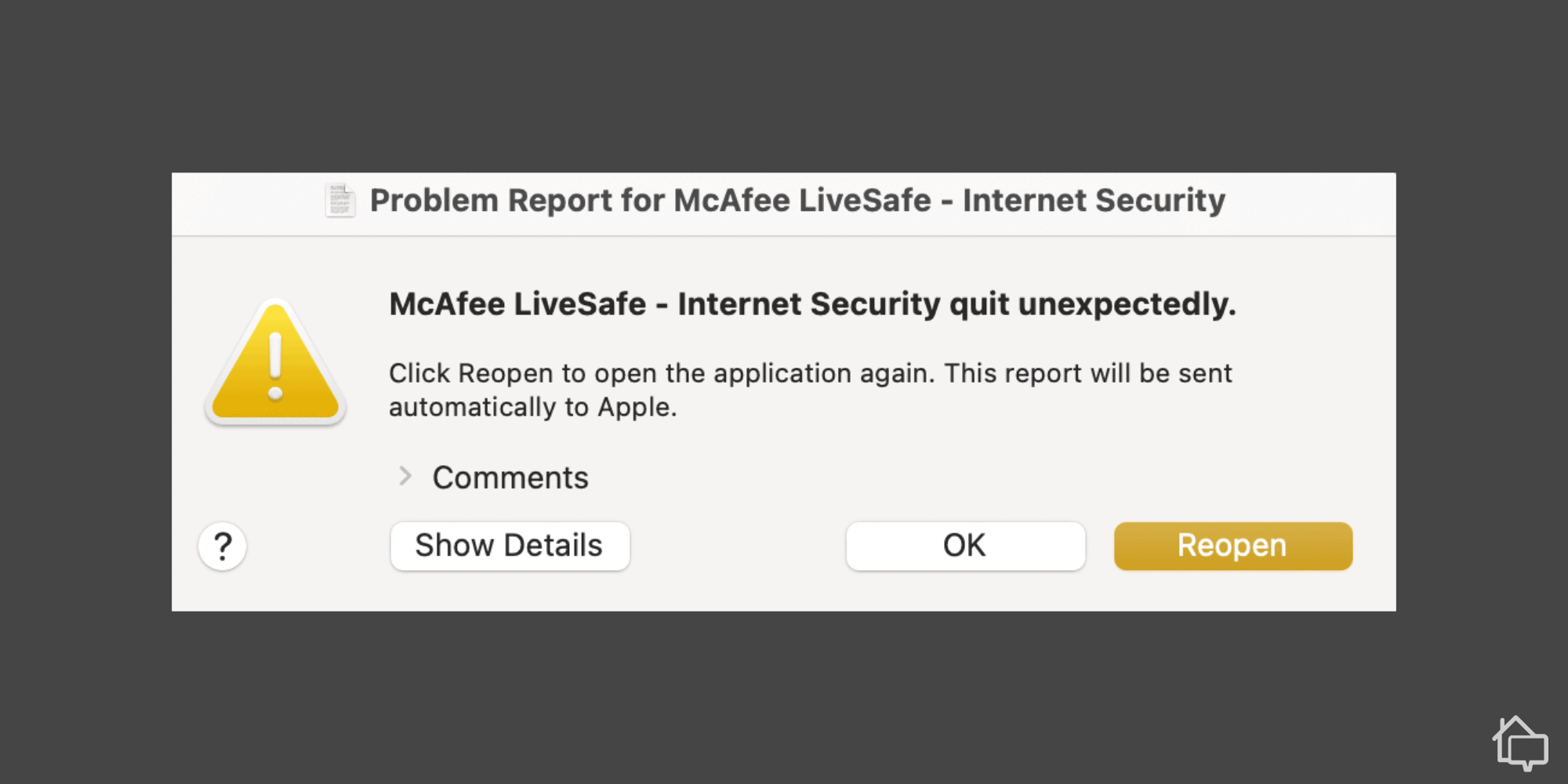
Ready, set, crash. It took me a few tries to get my McAfee software up and running.
On the plus side, McAfee’s software could also serve as my McAfee dashboard if I didn’t want to use the web app. I’d have access to all my McAfee tools here, in other words, which was neat.
But — a little annoyingly — not vice versa. I could monitor my ID from McAfee’s older software, but I couldn’t run a virus scan from the newer online dashboard because the virus scanner wasn’t there.
At the end of the day, this is a small gripe.
FYI: Think your kids are safe because they don’t have credit scores yet? Think again. Over 1 million American children fell victim to identity theft in 2021 alone.2 Check out our favorite picks for ID protection for families to stay one step ahead of the prowlers.
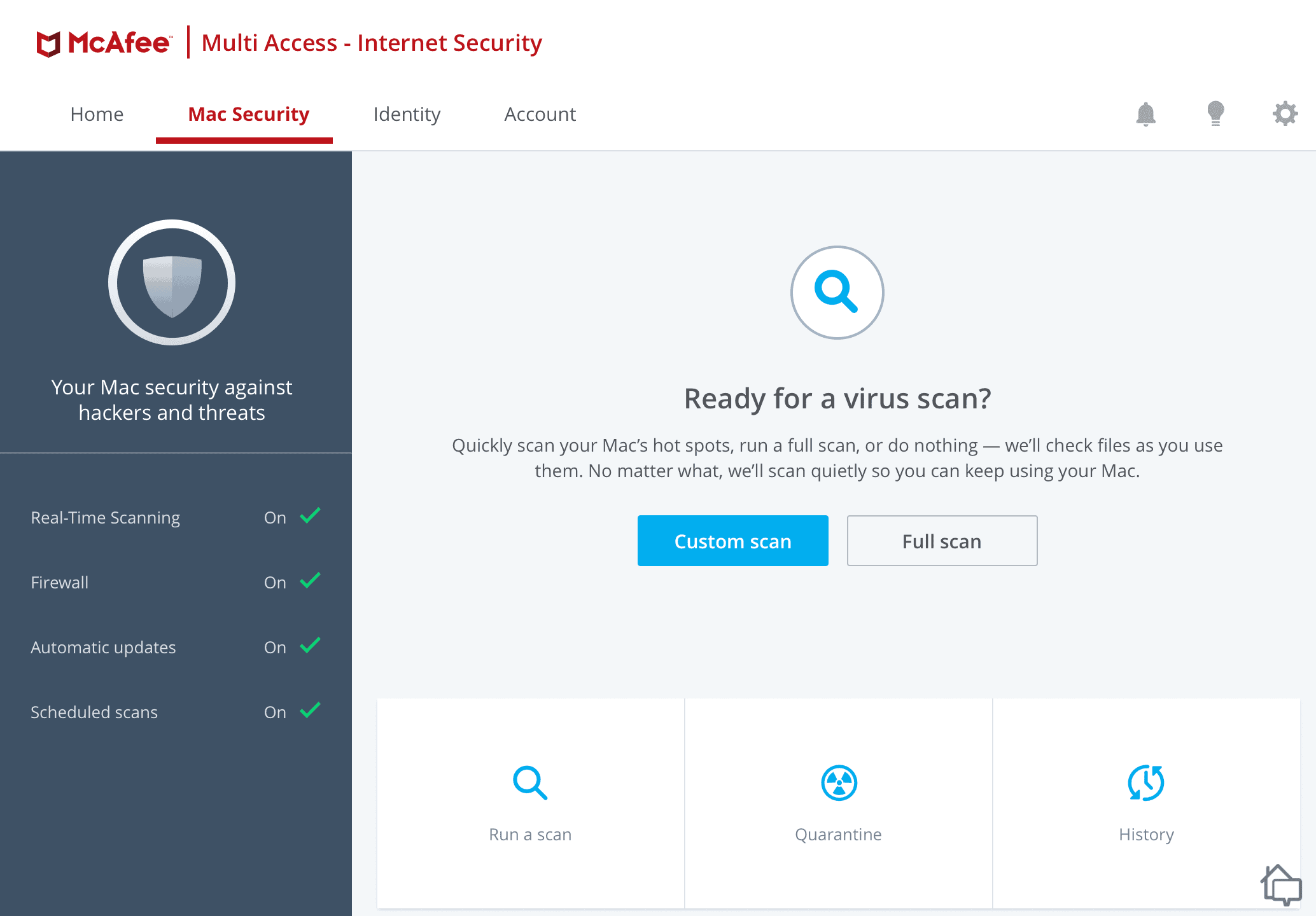
This may not be your experience on a PC, but McAfee’s virus scan kept crashing on my M1 iMac.
Things got a lot hairier when I tried to run my first virus scan. McAfee just didn’t want to run on my Mac. After a long, rambling conversation with customer support (with very little gold in my pan at the end of it), I reinstalled McAfee’s software and did eventually manage a scan, which, unlike my personal data, was completely safe and sound.
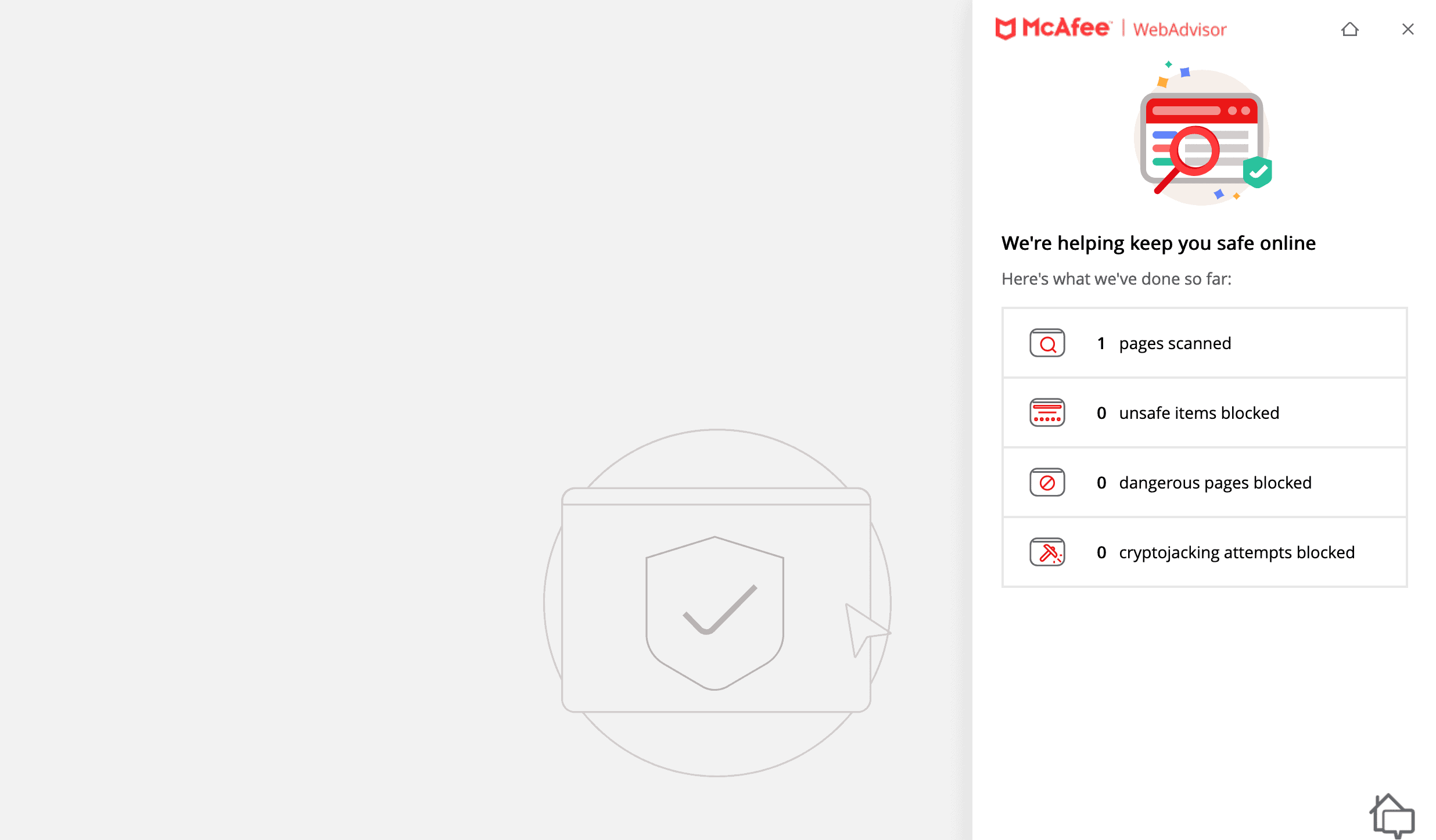
Shoring up Firefox with McAfee’s WebAdvisor browser extension.
Sometimes I think I’d be a lot happier not knowing what’s happening on the other side of my screens. There’s a lot of bad stuff going on, and some of it makes the latest flavor of ransomware sound like Sunday lunch at grandma’s.
I’m talking about cryptojackers, who find backdoors onto our laptops and conscript them into their zombie armies of Bitcoin-harvesting drones. And typosquatters. You type “yelpp.com” into your browser by accident, and low and behold a scammer has set up a copycat website to nab your login and password.
That’s just a taste of what’s out there, so I wanted to get McAfee’s free WebAdvisor — the antidote to all that mayhem — up and running ASAP.
Unlike its hit-or-miss software, McAfee’s browser extension was a piece of cake to install. I’m a diehard Firefox user, so it was as simple as adding the extension to my browser. When I clicked on the icon in my toolbar, a drawer slid out and I could see how many iffy pages, lines of code, or cryptojacking attempts had been caught and blocked.
Identity Protection Tip: Cryptojacking malware can be fiendishly difficult to isolate, even for antivirus software.3 Your best bet for staying safe is using a smart ad blocker, updating security patches the minute they become available, and installing malware-intercepting software, like McAfee, that’s trained to sniff it out.
My McAfee Premium Family plan gave me ID monitoring (minus triple-bureau credit monitoring and restitution services), antivirus software, and malware protection built into my browser, along with a password manager and basic VPN (for up to five devices) that I haven’t even touched on.
What did all that digital protection cost?
The first year was $49.99, and $129.99 upon renewal. Upgrading to the family plan, which comes with parental controls for my kids, was only 10 bucks more the first year, bringing my bill to $59.99 (and $149.99 upon renewal).
That works out to a little under $11 per month, which is actually pretty cheap for premium identity monitoring. I have found IdentityGuard ID theft monitoring packages that start as low as $7.50, but $10 to $15 is par for the course. Aura’s identity theft protection service, starting at $12, is a case in point.
Let me remind you that with McAfee, I wasn’t just getting ID monitoring. I was getting malware protection, a VPN, and a password manager thrown in.
The only service I can think of that comes close to this level of overall digital security at a comparable price point is NortonLifeLock with 360. Norton’s huge array of packages and pricing levels may leave you scratching your head, though. For a clear-headed breakdown, check out my hands-on NortonLifeLock review.
Is all that protection against the bad web enough to make up for the frankly limited ID theft protection McAfee’s plans actually give you? Let me give you my two cents.
Did You Know? When we say nothing’s sacred to fraudsters, we really mean it. Some criminals won’t think twice about taking over the identity of our loved ones even after they’ve passed. Here are the signs and what to do if a cybercriminal goes after your deceased loved ones.
No doubt, a McAfee subscription is tempting. When I see $11 per month for all that identity protection, part of me just wants to click.
I can say the same thing about McAfee’s ID monitoring service. If McAfee offers credit report monitoring — which seems to be the case — why not say it? I can’t keep my identity completely safe if I don’t know what’s going on with my credit reports.
Although the slightly pricier Advanced plan would give me $1 million in ID restoration services if I ever ended up in hot water, triple-bureau credit monitoring would make it a lot harder to end up there in the first place.
Lukewarm credit monitoring — and the fact that I couldn’t get much of McAfee’s antivirus software up and running on the first (or second) try — are bona fide stumbling blocks. But that doesn’t mean I wouldn’t say yes to a McAfee subscription if I could iron out the kinks.
FYI: In 2021, imposter scams — where a huckster poses as someone else (tech support, a friend, a government official) to con you out of money — reaped over $2.3 billion from unsuspecting victims.4
A few months ago I reviewed a mobile ID monitoring service called Lookout, a lightweight app that secures all your smartphone transactions and keeps a tight watch over your personal information without credit monitoring. I really liked Lookout, and I still have it on my Android today.
Some of us aren’t looking only for breach protection. We want to know if a thief is in the final stages of wrecking our credit. And if our credit is ever compromised, we definitely don’t want to have to empty our savings to pay to clean up the mess.
An ID monitoring service with restitution services is great, and McAfee offers that with the slightly more expensive Advanced plan. But without triple-bureau credit monitoring, McAfee’s ID protection is still a hulked-out version of Lookout: solid personal information breach monitoring, a full battery of malware protection, and a VPN and password manager — but no protection against an assault on our credit.
Not good enough? We’ve reviewed a bunch of first-rate alternatives in these pages. On the other hand, if that’s all you’re looking for, then McAfee will probably make you and your wallet happy.
Identity Protection Tip: According to Nordpass (NordVPN’s password manager), the average person is juggling 100 passwords or more. No wonder so many of us are turning to password vaults to remember them all.
Yes, McAfee’s online dashboard and web extension (WebAdvisor) are both totally smooth.
Yes, and it will only bump your monthly bill up $10.
McAfee’s ID protection service is competitively priced. When you factor in the value of your free VPN, password manager, and antivirus software, it becomes a great value.
Yes, but only with Experian.
You can install and run McAfee’s malware protection software on up to 50 devices with the Premium plan.
Yes, but you have to keep your plan on auto-renew to use it.
Federal Trade Commission. (2022, May 5). Consumer Sentinel Infographic. Tableau Public.
https://public.tableau.com/app/profile/federal.trade.commission/viz/ConsumerSentinel/Infographic
Kitten, Tracy and Susanne Sando. (2021, Nov 17). 2021 Child Identity Fraud Study – Key Findings. Javelin.
https://www.javelinstrategy.com/webinar/2021-child-identity-fraud-study-key-findings
Honea, Matt. (2020, Oct 1). Cryptojacking: The Unseen Threat. Informa Tech – Dark Reading.
https://www.darkreading.com/vulnerabilities-threats/cryptojacking-the-unseen-threat
Federal Trade Commission. (2022, Feb 22). New Data Shows FTC Received 2.8 Million Fraud Reports from Consumers in 2021.
https://www.ftc.gov/news-events/news/press-releases/2022/02/new-data-shows-ftc-received-28-million-fraud-reports-consumers-2021-0